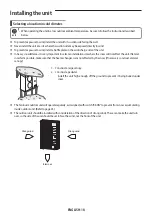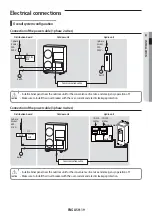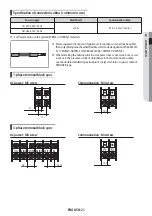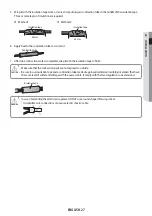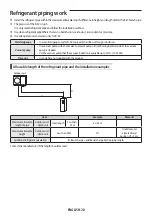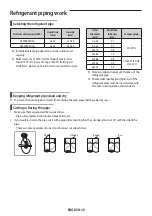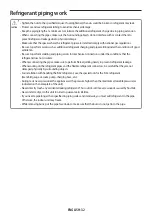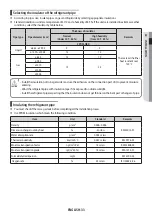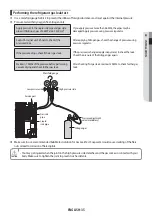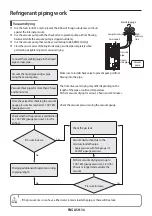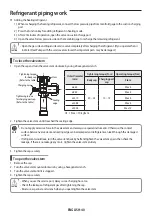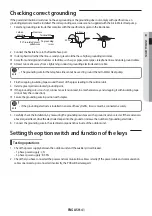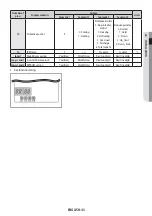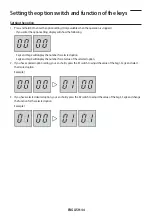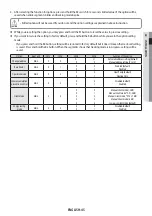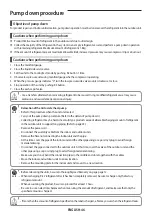
ENGLISH-32
Refrigerant piping work
• Tighten the nuts to the specified torques. If overtightened, the nuts could be broken so refrigerant may leak.
• Protect or enclose refrigerant tubing to avoid mechanical damage.
• Keep the piping length at a minimum to minimize the additional refrigerant charge due to piping extension.
• When connecting the pipes, make sure that surrounding objects do not interfere with or contact them to
prevent refrigerant leakage due to physical damage.
• Make sure that the spaces where the refrigerant pipes are installed comply with national gas regulations.
• Be sure to perform works such as additional refrigerant charging and pipe welding under the conditions of good
ventilation.
• Be sure to perform welding and piping works for mechanical connections under the conditions that the
refrigerant does not circulate.
• When reconnecting the pipes, make sure to perform flared-jointing newly to prevent refrigerant leakage.
• When working on the refrigerant pipes and the flexible refrigerant connectors, be careful that they are not
damaged physically by surrounding objects.
• For installation with handling the R-32 refrigerant, use the special tools for the R-32 refrigerant
(manifold gauge, vacuum pump, charging hose, etc.).
• During tests never pressurize the appliances with a pressure higher than the maximum allowable pressure(as
indicated on the nameplate of the unit).
• Never directly touch any accidental leaking refrigerant. This could result in severe wounds caused by frostbite.
• Never install a dryer to this unit in order to guarantee its lifetime.
• If you need a pipe longer than specified in piping codes and standards, you must add refrigerant to the pipe.
Otherwise, the indoor unit may freeze.
• While removing burrs, put the pipe face down to make sure that the burrs do not get in to the pipe.
CAUTION

